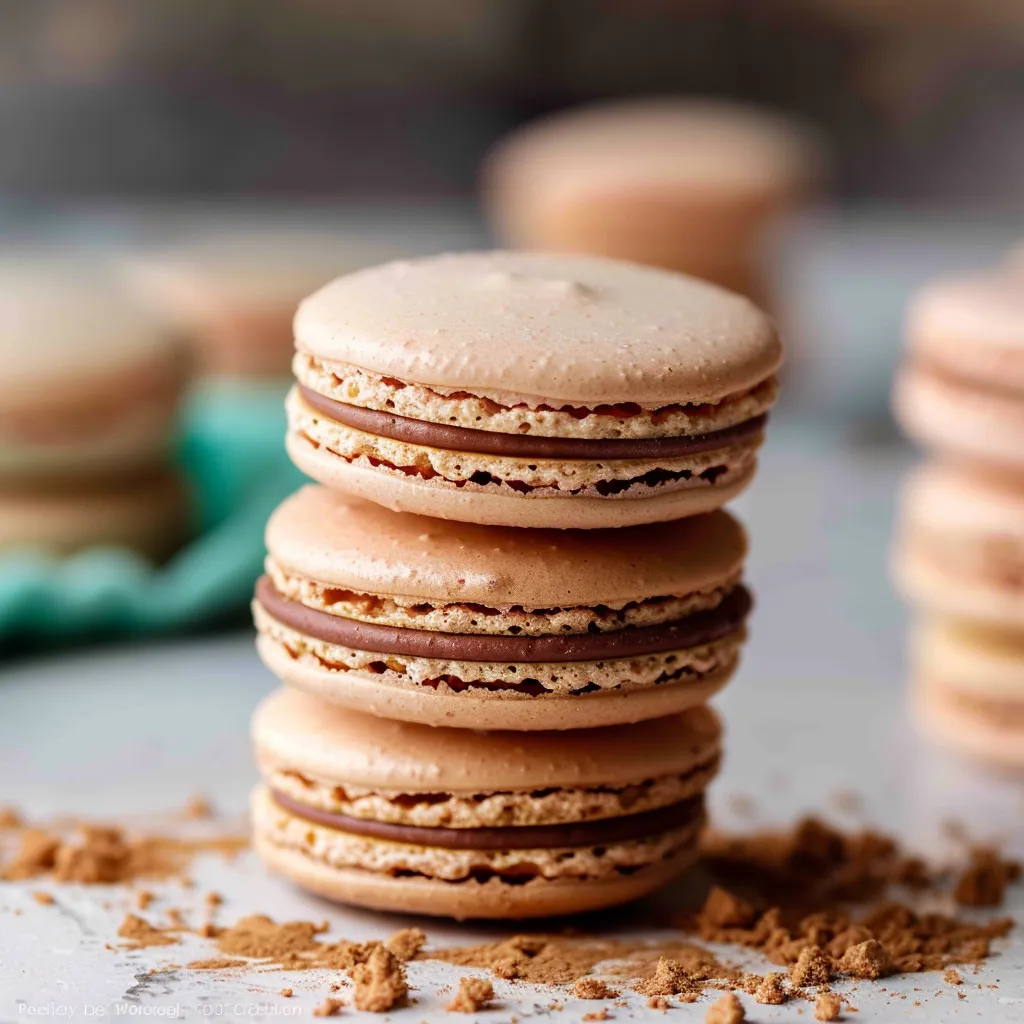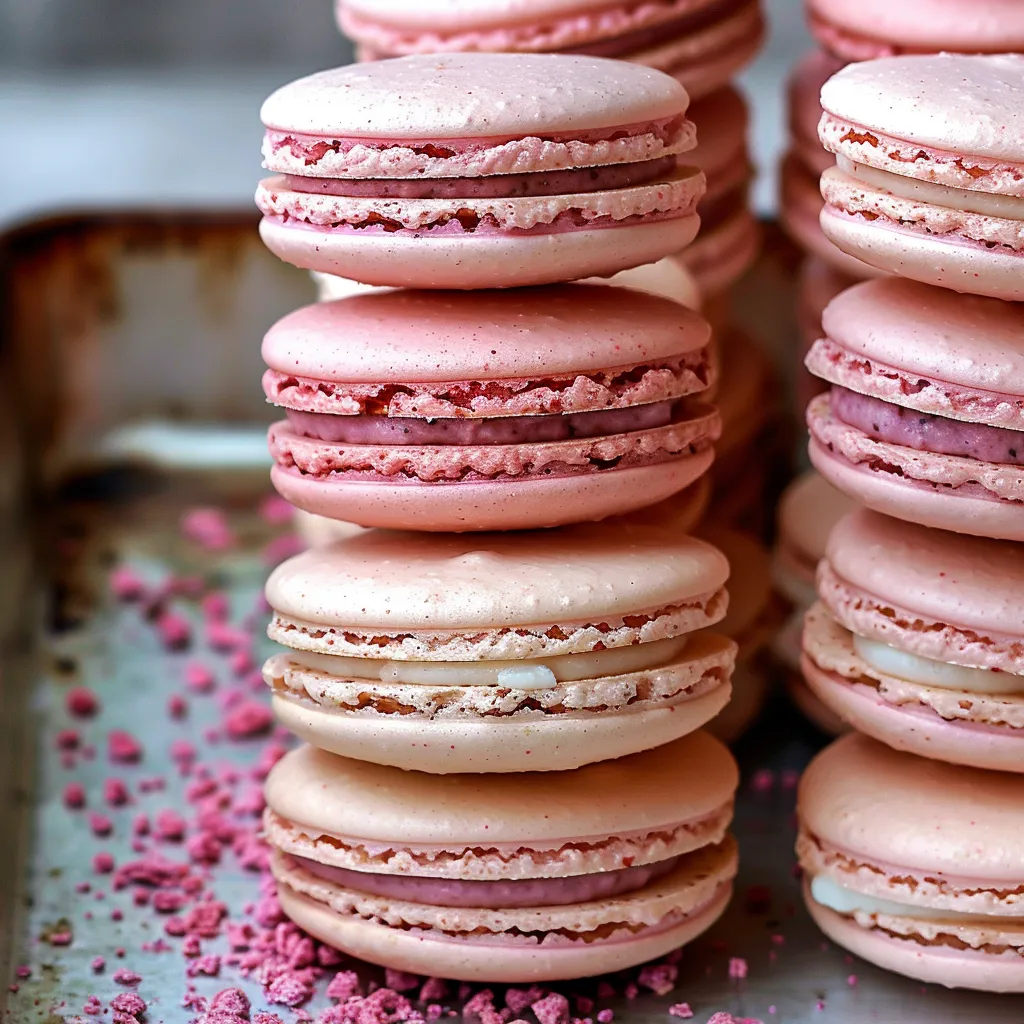 Pin to Favorites
Pin to Favorites
Macarons - those delicate, colorful French cookies that seem to intimidate even seasoned bakers. But here's the truth: with careful attention to detail and the right technique, you can create these elegant treats right in your home kitchen. After countless batches (and yes, some memorable failures), I've developed a foolproof method that takes the mystery out of macaron making while delivering consistently beautiful results.
The moment I finally achieved that perfect macaron - smooth top, frilly feet, and just the right texture - was pure kitchen magic. Now I love teaching others how to recreate that same success. Even my teenage niece mastered these on her second try using this method.
Essential Ingredients
- Almond Flour: Must be super fine and sifted twice - no shortcuts here. I prefer Bob's Red Mill for consistent results
- Egg Whites: Age them at room temperature for 24 hours for optimal meringue stability
- Powdered Sugar: Sift to remove any lumps that could mar your smooth shells
- Granulated Sugar: Helps stabilize the meringue - add it gradually for best results
 Pin to Favorites
Pin to Favorites
Step-by-Step Instructions
- Perfect Your Prep:
- Measure ingredients precisely using a kitchen scale. Sift almond flour and powdered sugar together twice, discarding any large pieces. Line baking sheets with parchment or silicone mats. Set up your piping bag with a round tip. Ensure egg whites are completely free of yolk and at room temperature.
- Master the Meringue:
- Begin whipping room temperature egg whites on medium speed until foamy. Gradually add granulated sugar while continuing to whip. Increase speed to medium-high and whip until stiff, glossy peaks form. Add gel food coloring if desired - just a few drops for pastel shades. Test by turning the bowl upside down - meringue should stay put.
- Create the Perfect Batter:
- Add the sifted dry ingredients to the meringue in three portions. Use a rubber spatula to fold with a J-motion, scraping sides and bottom. Continue folding until batter flows like lava and disappears back into itself after 20-30 seconds. Test by lifting spatula - batter should fall in a continuous ribbon. Stop immediately when you reach this stage - overmixing leads to flat cookies.
- Pipe with Precision:
- Fill piping bag halfway with batter. Hold bag perpendicular to baking sheet. Pipe 1-inch circles, keeping consistent pressure. Lift straight up with a quick flick to avoid peaks. Tap sheets firmly on counter 3-4 times to release air bubbles.
My first attempt at macarons was a complete disaster - flat, cracked shells that stuck to the paper. But that failure taught me the importance of patience and precision in each step.
The Resting Period
Let your piped shells rest at room temperature until they form a skin - you should be able to gently touch the top without batter sticking to your finger. This usually takes 30-60 minutes, depending on humidity.
Temperature Control
Oven temperature is crucial. I always use an oven thermometer and adjust as needed. Too hot, and your shells will crack; too cool, and they won't develop feet.
After years of making macarons, I've learned that success lies in the details. These aren't cookies you can rush or improvise with, but that's part of their charm. Each batch teaches you something new, and when you achieve that perfect shell with beautiful feet, smooth tops, and just the right texture, it's incredibly satisfying. Remember, even professional pastry chefs had to start somewhere - your first batch might not be perfect, but each attempt brings you closer to mastery.
 Pin to Favorites
Pin to Favorites
Frequently Asked Questions
- → Why do macarons need to rest before baking?
- Resting forms a dry skin on top of the shells, which helps create the signature smooth top and 'feet' during baking.
- → What are macaron 'feet'?
- Feet are the ruffled edges that form at the base of properly made macarons during baking, showing they've been made correctly.
- → Why should macarons mature in the fridge?
- Refrigerating filled macarons for 24-48 hours allows flavors to develop and creates the perfect chewy texture.
- → What does the right macaron batter consistency look like?
- The batter should flow like lava and create ribbons that disappear back into the mixture within 10-15 seconds.
- → Why must egg whites be at room temperature?
- Room temperature egg whites whip better and create more stable peaks for the perfect macaron structure.
